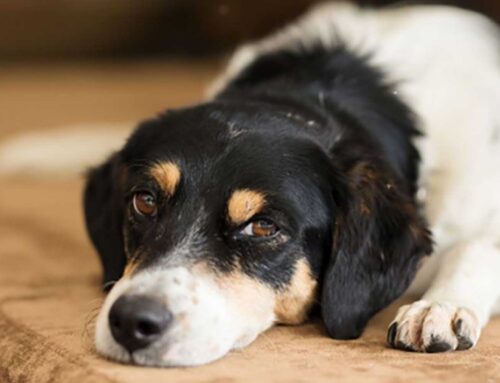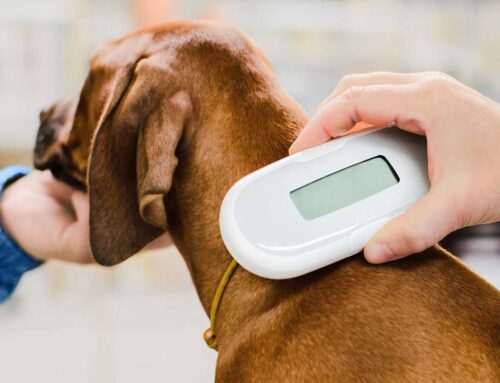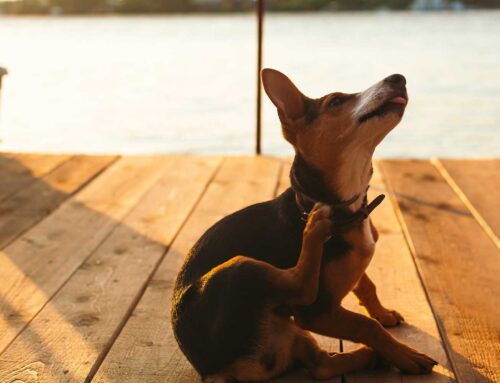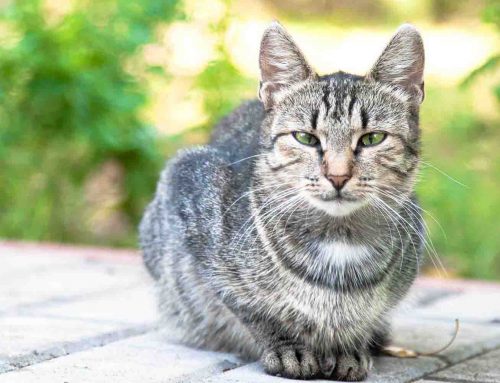A phobia is an excessive and persistent fear of a specific stimulus or situation. In dogs, the most common phobias are thunderstorm and noise phobias. About 90% of dogs with storm phobias have noise phobias, but only 75% of dogs with noise phobias have storm phobias.
Storm phobias present a challenge to owners, veterinarians and behaviourists. Many dogs that exhibit storm phobia have very intense symptoms. These can include panting, pacing, whining, drooling, hiding, and destruction. They will often go through windows and doors and sustain injury in the process. Thus, these dogs can be dangerous to themselves.
In many dogs storm phobias and separation anxiety may co-exist. Some animals are better when the owner is present and signs displayed at that time might be minimal but intense responses are noted when the animal is alone. Many dogs appear able to chain events together that predict a storm. They show responses to drops in barometric pressure, changes in wind or lighting conditions, lightning or even thunder in the distance that may not be heard by people.
Treatment
Acute Management Strategies
- Create a safe and secure environment for the dog. For storms this might be a darkened room where lightning flashes will not be seen or a windowless indoor room where sound is muted. Eye covers such as Doggles can reduce visual stimuli.
- If your pet has selected a hiding place, do not try to forcibly remove them, this is not helpful and may result in an aggressive response.
- Punishment must never be used since it will only increase rather than decrease your pet’s distress.
- Encouragement, praise or fostering may not be helpful either as the pet may interpret them as rewards for the behaviour they are performing at the time. Worthwhile interventions if they calm the dog then eg, long smooth strokes.
- Playing music that is loud or has a strong beat or some type of white noise (exhaust fan) may aid in muffling the outside noises that cause the distress. Ear covers (eg, Mutt Muffs) and sound muting cage covers (eg, Thunderhul) can help.
- Playing with familiar toys, engaging in games or practicing obedience may help to distract the pet. Do ignore the noises yourself.
- Use of a head collar and leash may offer additional control and can be calming for some dogs.
- If the pet is pre-trained to go and settle on a mat, bed or other location, this strategy can help increase calm behaviour.
- Presence of a calm housemate or a friend’s dog that is not scared by noises & does get on with the problem dog can be extremely helpful. Examples are keeping the two dogs together on firework nights or playing with the non-fearful dog during a storm may help to encourage the fearful dog that all is not so bad after all.
- Do feed the dog a good meal rich in carbohydrate with added vitamin B6 mid- to late afternoon (not if prone to diarrhoea especially when scared).
Long Term Strategies
One technique is to teach the pet to relax on a verbal command. This must be taught in locations and situations where the pet does not experience anxiety. The goal is to use food to induce a sense of relaxation rather than just to “stay”. For storm phobias it is useful to practice this in many situations, but also create a safe area where sound and visual input from the storm can be controlled and minimised.
The next phase is gradual introduction to the cause of the anxiety at a low level unlikely to cause a response. The owner requests the pet to assume the relaxed posture and then rewards the behaviour with food and/or praise. This is called desensitisation. Exposure is gradual with the intensity of the stimulus only increased once the pet has mastered the lower level of exposure.
The owner should use a “happy voice” and relaxed body postures to help the pet to learn that the situation is non-threatening. As with acute strategies, avoid negative actions and avoid reinforcement of inappropriate responses.
These techniques are used with storm phobias. The dog is taught to relax on a verbal command and if possible in a specific location such as a mat or rug as discussed above. Head collars can facilitate training and calmness during storms. The basic treatment plan is to obtain a recording of a thunderstorm (eg, www.soundtherapy4pets.com), and play it at low intensity and reward the dog for non-anxious or fearful behaviour. The lightning and the drop in the barometric pressure are two conditions that frighten some dogs but are too difficult to simulate in training. With time, some dogs will learn to attenuate their response, and will tolerate storms. Treatment seems to work best when done outside of thunderstorm season because ongoing exposure to the stimulus makes desensitisation difficult.
Additional Treatment Options
- Drug Therapy: Clomipramine, a twice daily tricyclic antidepressant, can help control anxiety and decrease the intensity of the response. Used over the months of November to February in Sydney, it helps whether the owners are home or away. This is advantageous as storms can occur with minimal warning. Xanax can be used on a “as needed” basis, ie, on the day of the storm, fireworks etc. It is best administered one hour before such event. Trazodone may be an additional option for dogs unresponsive to other therapies.
- DAP (Dog Appeasing Pheromone) has successfully helped for firework phobias. It is available as a room diffuser and a collar.
- A new product produced by HomeoPet Australasia is Storm Stress. It is a fast acting liquid, most often giving results in 15-30 minutes to help anxious pets. Storm Stress has shown significant success in trials with Australia’s leading veterinary behaviouralists. It can be administered directly into the mouth, in water, food or on a treat.
- Covers that wrap the dog have had variable success. Examples of such treatment capes are Storm Defender, Thundershirt or Anxiety Wrap.
References
Horwitz D. Bangs and Booms: Noise and Storm Sensitivities in Dogs . Western Veterinary Conference 2012
Overall KL, Dunham AE, Frank D. Frequency of Nonspecific Clinical Signs In Dogs with Separation Anxiety, Thunderstorm Phobia, and Noise Phobia, Alone or in Combination. J Am Vet Med Assoc 2001; 219 (4): 467-473
Levine ED. Sound Sensitivities. In: Horwitz, Mills, eds BSAVA Manual of Canine and Feline Behavioural Medicine. 2nd Ed. Gloucester, BSAVA; 2009: 159-168
Sheppard G, Mills DS. Evaluation of Dog Appeasing Pheromone as a Potential Treatment for Dogs Fearful of Fireworks. Vet Record. 2003; 152: 432-436
Levine ED, Ramos D, Mills DS. A Prospective Study of Two Self-help CD based Desensitisation and Counter-conditioning Programmes with the Use of Dog Appeasing Pheromone for the Treatment of Firework Fears in Dogs. Applied Animal Behaviour Science. 2007; 105:311-329
Gruen ME, Sherman BL. Use of Trazadone as an adjunctive agent in the Treatment of Canine Anxiety Disorders: 56 cases (1995-2007). JAVMA.2008: 233: 1902-1908






